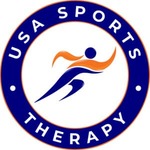Boxing is an intensely physical sport that requires athletes to train hard and push their bodies to the limit. It involves lengthy rounds of sparring and bag work, with both participants taking potential punches. As such, boxers need to take extra precautions when training to avoid injuries or illnesses.
Learning about the risks of boxing injuries is an important part of training safely and effectively, whether you practice in the ring or just for exercise and fun. By being aware of the most common boxing injuries and how to prevent them, you can keep yourself safe while still enjoying all the benefits of boxing.
What Are the Most Common Boxing Injuries?
The frequency and severity of boxing-related injuries vary greatly depending on the individual and their training habits. Still, there are some common types of boxing injuries that many fighters, both professional and recreational, will experience at some point.
The most common boxing injuries include:
Knuckle, Hand, or Wrist Sprains or Fractures
Boxers tend to use their hands very heavily in sparring and bag work, so sprains and fractures to the knuckles, hands, and wrists are quite common. One of the most common fractures is commonly known as a “Boxer’s Fracture,” which occurs to the 5th, or ‘pinky’ finger.
Head or Facial Injuries
Concussions, cuts, and contusions to the head or face may occur due to an opponent’s punches or from contact with the ring ropes. If you suspect a head injury or concussion, you must seek an examination from a medical provider. Some symptoms of this include, but are not limited to: loss of consciousness, dizziness, blurred vision, difficulty concentrating, headaches, nausea, vomiting, memory difficulty. Failure to get properly diagnosed and treated can result in a second injury and/or long term damage.
Rotator Cuff Tendonitis
Overuse of the shoulder joint, often from throwing too many punches, can lead to tendonitis or other rotator cuff injuries.
Foot and Ankle Sprains
Because of all the movement involved in boxing, foot and ankle injuries are common. This is especially true if a boxer doesn’t have proper support or arch support in their shoes.
Nerve Damage
Prolonged punching or blocking can cause nerve damage that may lead to temporary or even permanent loss of sensation in the hands or feet. This is typically caused by a buildup of pressure on the nerves due to repetitive motions.
Eye Injuries
Since much of boxing occurs in close proximity to the eyes, eye injuries are a serious risk. Even with protective gear, a boxer can still suffer from corneal abrasions or retinal detachment as a result of being punched in the face.
How to Treat Common Boxing Injuries
The most important step in treating any injury is to rest, which means taking a break from training and competition until the affected area has healed properly. Additionally, it’s essential to use proper protective gear while boxing to reduce the risk of additional damage. Over-the-counter medications such as ibuprofen may also be taken after an injury to help manage pain and inflammation. If there is concern for injury, seeking out examination from a medical provider should be considered.
For long-term recovery, physical therapy is an essential part of treatment. Our physical therapists at USA Sports are certified professionals trained in helping individuals recover from injuries and increase their strength and mobility. They can provide exercises and stretches that target specific areas of the body and help with proper form and technique when returning to boxing. Working with a physical therapist after an injury can often help speed up recovery time and reduce the chance of re-injury.
Additionally, working with a physical therapist can help prevent future injuries by strengthening muscles and improving balance, coordination, and agility that may be lacking due to overtraining or incorrect technique. With proper care and attention, many common boxing injuries can be managed successfully without surgery or long-term effects on performance. At USA Sports, we are ready to help you recover from an athletic-related injury.
Staying Safe in the Ring: Tips and Preventive Measures
If you are looking to reduce the risk of injuries, there are some preventative measures that you can take as a boxer. Here are some of the most important ones to remember:
Wear Protective Gear
Always protect yourself with headgear, a mouth guard, hand wraps, and properly fitting gloves.
Never Spar Without a Spotter
Have someone watch you at all times during sparring sessions to make sure you are safe and help in case of an emergency.
Take Breaks From Boxing
Give your body time to recover by taking regular breaks from training and competing. Make sure you get sufficient rest between bouts or practice sessions so that your body can heal properly from any minor injuries it may have sustained.
Stay Hydrated
Drink lots of fluids before, during, and after every practice session or match, as dehydration can lead to fatigue and increase the risk of heat exhaustion.
Consuming A Proper Diet
Due to the intense physical nature and demand of boxing and associated training, diet plays a key point in recovery. Without proper caloric intake and achieving the necessary macronutrients, your body will have difficulty healing damage or fatigued tissue and lack the energy needed to continue with activity.
The Importance of Proper Boxing Gear, Form, and Technique
When you are boxing, you must wear the proper gear and use the correct form and technique at all times. This will protect your body from injury and help you to maximize the effectiveness of your training. To ensure optimal performance in the ring, practice good techniques by shadow-boxing under the guidance of an experienced trainer.
Always pay attention to how your body feels during boxing sessions or matches; if something does not feel right, take a break and consult a doctor if necessary. In addition, don’t be afraid to stop training if you feel any pain or discomfort, as this could indicate an underlying medical condition or injury that needs attention.
If you are struggling with a recurring injury, it is important to know your limits and adjust your training accordingly. If you are in Florida, consider visiting our USA Sports physical therapy clinic in Boca Raton. Our team of professionals is dedicated to helping people of all ages reach their fitness goals and can provide you with specialized treatments for optimal recovery. We are also able to help identify any underlying medical conditions that may be contributing to your injury or pain.
In addition to physical therapy in Boca Raton, we also offer PT services in Broward, Miami-Dade, and other locations throughout Florida. So, what are you waiting for? Contact us to schedule an appointment today and get back to your training safely!

